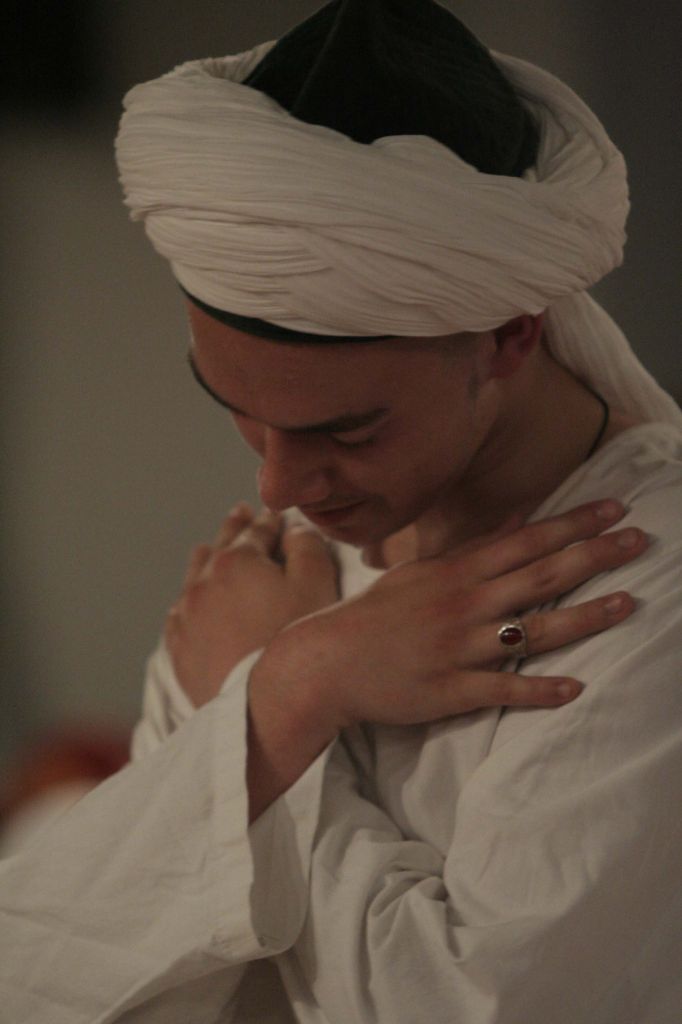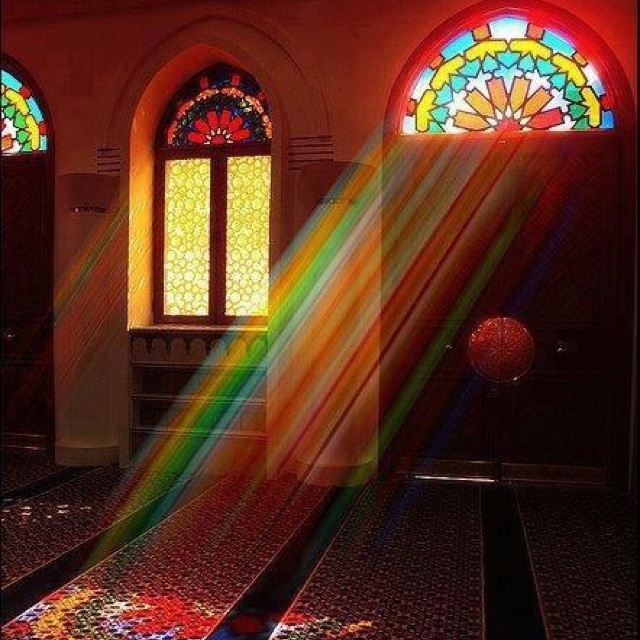Adab is an Arabic word not easy to translate. Literally it means to invite someone for food or to gather people around the table. It shows us that we have to present ourselves to the people and the presentation should happen in a proper way.
The adab is a very important aspect that is at the base of the Sufi Way.
It indicates the set of rules of conduct of the dervish; it is a school of consciousness that drives us constantly from the smallest things to larger ones. It is a way to bridge the gap between our specific action and its archetypal aspect of truth.
Adab is not traditionally taught in books, or as a university subject, it is something that you have to achieve through life from different sources. The first source is your parents, they teach you what they have learned and you follow their example, the way they eat, walk, sit, speak and later on you go to school and you meet teachers and you get inspirations from them as well and you follow their behavior, their manners.
Then a very important source that in the western society is very neglected is that the youngsters follow the elders and learn adab from them that usually have a better adab, or at least they should.
Adab is the correct and appropriate behavior and shows the area in which to move for every situation, in every aspect of life, in full respect towards others and towards oneself. It stands for the courtesy and sincere kindness, not merely the etiquette or the empty formality. It is the fragrance to put oneself at the service of God and his creation.
As Maulana says: “Adab is to learn your limit. If you know your limit you will have adab. Possessors of adab are the closer ones. They are searched for, desired and complimented. They are honored and addressed as Lovers.
Knowledge comes last, first comes adab. What is required, what is wanted from a man? Adab.
What is adab? To know one ‘s order, to know one ‘s place. To always know what to do.”
Adab also means being in the moment, because you will no longer need to think about every time how to perform a certain action. You become natural, relaxed in the right gesture, which is the same for everyone, and this brings peace, harmony, inside and outside of us. The adab gives order to our lives.
Adab describes the proper way of how to deal with situations in our daily life, in the best way under the light of wisdom to achieve a harmonic situation. For example one adab is to speak with a gentle voice, not to speak all the time when it is unnecessary. One aspect of adab is to sit in a manner that your private parts are not visible, or the way you walk, also not running but not walking too slow.
Adab has much to do with appearance, the way you present yourself in society and of course if you have a very good adab this smooths your daily life and gives you a very nice feedback from the people around you. Adab sweetens your life.
There is a saying : “We are more in need of learning adab than learning the hadith.”
Knowledge without adab is like fire without wood, and adab without knowledge is a spirit without a body.
And the Prophet (peace and blessings be upon him), says in a famous Buckari hadith: “The nearest of you to me in the day of Judgement it will be the one who is best in character”.
In the Sufi tradition, as in books about Sufism and Islam, adab has a very eminent place, and if someone wants to say something good about a brother he points out that he has very good adab for example.
In particular our Naqshbandi order is very sensitive to adab, and it is said that the great saint and founder of our order Shah Baha’uddin Khwaja Naqshbandi (may his secret be sanctified), repeated 12,000 times “Adab ya hu!” which means ‘keep your adab’ , ‘watch with a keen eye on your adab‘, be aware on how you present yourself to the outside. This again shows how important it is to concentrate on adab. You still find this words nowadays written in our dergahs.
Adab rapresents the beginning of the journey.
In the Sufi path adab is not learned by explanation but by imitation and the best teacher would be one Who has developed a very high adab. You have to see and watch as Maulana was saying to us , “Just watch me and try to do what I am doing, follow me in this and automatically you learn it by imitation.”
Adab means therefore to imitate the example of our Shaykhs and saints who were inspired by the Prophet Muhammad (peace and blessings be upon him) who in turn was inspired by the heavenly style.
In the Sufi tradition the Prophet (peace and blessings be upon him) is the model of adab. There have been handed down thousands of anecdotes that are minutely describing his behavior and his way of responding to any kind of situation.
The Prophet (peace and blessings be upon him), used to speak peaceably with everyone. He never screamed and never attacked anyone in his entire life.
In the Quran, there is an ayat in Surah al Qalam, the 4th, that says: “And you truly have the best manners.” Allah is addressing to the Prophet,(peace and blessings be upon him), who was famous for his perfect good manners.
Also one hadith says: “Addabanii rabbi fa ahsana ta’dii – bii”
(My Lord taught me good manners and He taught me in the most excellent way)






